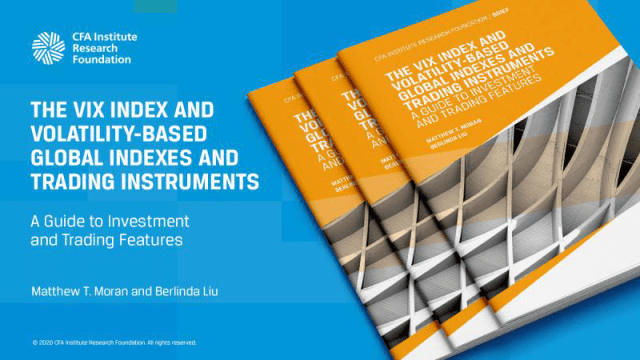[ad_1]
The coronavirus pandemic has flipped the world over and with it the fundamental nature of stock price movements.
Since equity markets hit their peak back on 20 February 2020, the underlying foundation of systematic risk in markets has somersaulted on its head. Stocks from the technology, pharmaceutical and biotech sectors, for example, used to amplify market movements — rising higher when the market went up and falling further when it declined. But in the COVID-19 market, they actually display lower volatility. At the same time, stocks that previously exhibited a dampening effect — defensive and mining stocks, say — and lagged a spiking or declining market, now have sharper ups and downs.
This shift not only inverts the relationship between risk and reward, but also has profound implications for how investors diversify their holdings and think about mitigating and minimizing portfolio risk.
In finance, the relationship between an equity’s returns and that of the overall market is measured by beta. Stocks with betas over 1.0 have greater systematic risk than the market as a whole. So if the market — here the S&P 500 — rises 1%, high beta, riskier stocks like tech, pharma, and luxury goods companies will increase by more than 1%. Conversely, if the S&P 500 drops 1%, they will fall by a greater percentage.
And yet, since the coronavirus crisis took over, these tried-and-true relationships have reversed.
We analyzed daily US equity data from 20 February to 1 June to see just how much has changed with particular sectors and the risk they pose to a portfolio.
Technology and work from home (WFH) companies in particular demonstrate just how profound a sea change has taken place. These WFH companies are featured in the Work from Home exchange-traded fund (ETF) (ticker: WFH) and include Zoom, Slack, Amazon, and DropBox, among others. Their revenues presumably expand when more people work remotely, as they have in the new locked-down world of coronavirus.
Coronavirus-Induced Beta Inversion
| Coronavirus Beta | 2019 Beta | Change in Beta | |
| Work from Home (WFH) | 0.90 | 1.35 | -0.45 |
| Pharmaceuticals | 0.81 | 1.11 | -0.30 |
| Information Technology | 1.11 | 1.37 | -0.26 |
| Health Care | 0.90 | 0.98 | -0.08 |
| Communication Services | 0.90 | 0.97 | -0.07 |
| Industrials | 1.07 | 1.14 | -0.07 |
| Materials | 1.08 | 1.06 | 0.02 |
| Consumer Discretionary | 1.19 | 1.06 | 0.13 |
| Energy | 1.44 | 1.26 | 0.18 |
| Consumer Staples | 0.73 | 0.54 | 0.19 |
| Financials | 1.30 | 1.06 | 0.24 |
| Real Estate | 1.16 | 0.44 | 0.71 |
The beta shifts are dramatic. For instance, Zoom went from a beta of 1.82 in 2019 to -0.36 during the four-month pandemic period. What does that mean? In 2019, if the S&P 500 rose 1%, Zoom would rise 1.82% on average. Now, when the market rises 1%, Zoom declines by 0.36%.
Good news for the market is bad news for Zoom.
Betas for companies in the WFH sector have fallen across the board. Amazon’s beta of 1.33 in 2019 declined to 0.60 during the four-month sample period. Dropbox went from a beta of 1.43 last year to 0.77. All told, the average beta of WFH companies fell from 1.35 in 2019 to 0.90. And the average beta of all information technology companies has declined to 1.11 from 1.37.
And tech isn’t the only sector where volatility has dropped. The betas of pharmaceutical and biotech companies have plummeted as well. For instance, Moderna had a beta of 1.33 last year. It fell to -0.03 during the coronavirus period. Combined pharmaceutical and biotech companies have seen their average beta decline from 1.11 in 2019 to 0.81.
Finally, what about companies with negative betas? How has the COVID-19 effect impacted them? The stock prices of the rare negative beta firm move counter to the overall direction of the market, falling when the S&P 500 is on the rise, and spiking when the index declines.
Of the 285 companies with negative betas listed on the NYSE/NASDAQ last year, half were in the mining and extraction sector. Only 5% were in pharmaceuticals. This year, those numbers have completely reversed: Mining stocks compose just 5% of negative beta stocks, pharmaceuticals more than 50%.
The capital asset pricing model (CAPM) suggests the greater the beta, the greater the potential for outsized returns in the long run. The complete 180 in how companies move with the market means we have to rethink how we approach risk and returns. Safe companies may now be risky and risky companies safe.
Investors need to take note. When it’s time to rebalance our portfolios, stocks from so-called low-volatility sectors may now actually increase our risk, and vice versa.
That’s the new reality in this topsy-turvy coronavirus world.
If you liked this post, don’t forget to subscribe to the Enterprising Investor.
All posts are the opinion of the author. As such, they should not be construed as investment advice, nor do the opinions expressed necessarily reflect the views of CFA Institute or the author’s employer.
Image credit: ©Getty Images / Ian Kristoffer Lava / EyeEm
Professional Learning for CFA Institute Members
CFA Institute members are empowered to self-determine and self-report professional learning (PL) credits earned, including content on Enterprising Investor. Members can record credits easily using their online PL tracker.
[ad_2]
Image and article originally from blogs.cfainstitute.org. Read the original article here.


